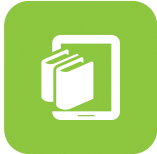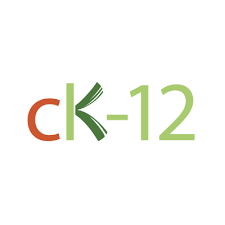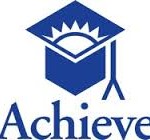Table of Contents
Selection
-
Reviews
When selecting and adopting instructional materials, reviewers may conduct an internal review/vetting process or select materials that are already vetted by external organizations. For an internal review and selection process, states generally issue a request for proposal for the types of instructional materials to be reviewed during the current cycle. Publishers are invited to submit instructional materials. States assemble review teams and evaluate submitted materials using rubrics and tools. For external reviews, state and districts rely on the vetting of external organizations.
Curation
After instructional materials are reviewed, states, districts and schools curate those vetted materials either through their own digital repository or through a vendor platform. Many states curate instructional materials by packaging the digital tools and resources, as well as hosting the digital content. Whether districts are required to follow state policies for the selection and implementation of instructional materials or they develop their own policies, any district or school can access these state resource repositories to find high quality digital tools and resources. States provide these resources repositories as a service to districts and schools who often don’t have the time and staffing to adequately review and approve digital resources.
-
Core vs Supplemental
When selecting new instructional materials, options may include a full core course replacement for a specific content area or supplemental materials to support the core materials. Reviewers should consider the rubrics and tools used as they may differ depending upon whether it is a course re-design or the selection of supplemental materials. States often use common rubrics across subject areas to evaluate instructional materials. However, the academic standards within the rubric will differ depending upon the subject area.
Key Questions
- Are you planning to select a new core curriculum for a specific content area?
- Are you considering implementing supplemental materials to support current materials?
- Are you implementing digital instructional materials?
Core Instructional Materials Resources
- EdReports Reviews – Mathematics and ELA
- iNACOL’s National Standards for Quality Online Courses – online course
Instructional Materials Evaluation Tool (IMET) – Mathematics and ELA - State Instructional Materials Review Association (SIMRA)
Supplemental Instructional Materials Resources
- Educators Evaluating Quality Instructional Products (EQuIP) – Mathematics, ELA, and Science
- Educational Technology Rapid Cycle Evaluations – digital tools/applications
- Achieve OER Rubrics – any content area
-

Report: “Choosing Blindly: Instructional Materials, Teacher Effectiveness, and the Common Core”
Grover J. “Russ” Whitehurst and Matthew M. Chingos Tuesday, April 10, 2012
-

Report: “Don’t Forget Curriculum”
Grover J. “Russ” Whitehurst Wednesday, October 14, 2009 Brown Center Letters on Education, Brookings Institute
-
Digital vs Print
States, districts, and schools purchase instructional materials in a variety of formats for instructional needs. Print materials, textbooks, workbooks and paper-based activities continue to be mainstream instructional materials in K12 education however, shifting to digital is a fast growing trend and often teacher and student resources are a blend of both print and digital. As schools and districts move towards student-centered, personalized learning approaches to increase student success — utilizing digital resources supports these deeper learning experiences. Digital materials can provide increased benefits via interactive functions that support differentiated learners and pique student interests. Digital materials are often more flexible and portable than print content and can be more easily adapted to personalize learning experiences. Digital materials may include full course content, specific apps based on subject areas, online textbooks, and simulations.
Digital Material’s Unique Characteristics
Digital materials provide many teaching and learning benefits to educators and students.
- Opportunity for more rapid updates than traditional print materials
- More easily adapted to address students’ learning differences and styles (with an appropriate license),
- Interactive functions
- Long-term storage of content
- Inclusion of video and adaptive practice
- Real-time assessments
- encourage collaboration, co-creation
Beyond the PDF – The shift to digital is not just a digital format of a textbook. Digital content should be interactive and engaging including features such as videos, practice activities, word banks, dictionaries, and note taking tools.
-

Ensuring the Quality of Digital Content for Learning
This position paper complements SETDA’s prior digital transition policy briefs by examining strategies for ensuring digital content quality, including exploration of the speci c quality-control challenges and opportunities associated with open educational resources (OER).
-
National Ed Tech Plan
The National Education Technology Plan provides a vision of transformational learning experiences powered by technology.
-

Navigating the Digital Shift
This report provides details to help educate school and district administrators, policy makers and the private sector on the flexibility of state policies related to the procurement of digital instructional materials.
-
North Carolina Digital Learning Plan – Funding and Policy
North Carolina makes recommendations for funding and policy as the state shifts to digital learning.
-
This section highlights various rubrics used by states, districts, and schools for the evaluation instructional materials.
 Rubrics: Align to the Common Core State Standards, Tools for evaluating the alignment of instructional and assessment materials to the Common Core State Standards.
Rubrics: Align to the Common Core State Standards, Tools for evaluating the alignment of instructional and assessment materials to the Common Core State Standards.
Achieve OER Rubrics developed eight rubrics to evaluate the quality of instructional resources.
EQuIP rubrics evaluate lessons that include instructional activities and assessments aligned to the CCSS or the NGSS that may extend over a few class periods or days and units that include integrated and focused lessons aligned to the CCSS or the NGSS that extend over a longer period of time.
Digital Promise DCPS Sample Product Evaluation Rubric. This rubric helps compare different technology products to make curricular decisions.
Ed Surge Product Index
 This community-driven database includes recommendations from teachers on educational technology products. Educators can search for products by category, grade level, curriculum type, technology requirements and cost.
This community-driven database includes recommendations from teachers on educational technology products. Educators can search for products by category, grade level, curriculum type, technology requirements and cost.
Edreports.org provides instructional materials reviewed for quality and standards alignment.
Educational Technology Rapid Cycle Evaluations
 helps educators make evidence based decisions on acquiring digital tools/applications. Tools will help educators design and conduct evaluations and pilot tests.
helps educators make evidence based decisions on acquiring digital tools/applications. Tools will help educators design and conduct evaluations and pilot tests.National Standards for Quality Online Courses
 . iNACOL shares a rubric, developed by the Texas Education Agency’s Texas Virtual School Network for assisting in the review of online courses.
. iNACOL shares a rubric, developed by the Texas Education Agency’s Texas Virtual School Network for assisting in the review of online courses. IMET is a tool for evaluating textbooks for alignment to the shifts and major features of the Common Core State Standards. It is a tool within the Materials Alignment Toolkit
IMET is a tool for evaluating textbooks for alignment to the shifts and major features of the Common Core State Standards. It is a tool within the Materials Alignment Toolkit
SpotOn Rubric
 can be applied to eight digital product types including core, non-core, units, lessons, games, apps, and adaptive resources.
can be applied to eight digital product types including core, non-core, units, lessons, games, apps, and adaptive resources. 10 Common Criteria for Evaluation of Instructional Materials. SIMRA presents the 10 common criteria for the evaluation of instructional materials.
10 Common Criteria for Evaluation of Instructional Materials. SIMRA presents the 10 common criteria for the evaluation of instructional materials. TEC Data Platform is an online library of edtech market pricing data specifically developed for school districts. TEC worked with Lea(R)n on this project. The platform allows member districts to access price reports on the products they are considering for first-time purchase or renewal.
TEC Data Platform is an online library of edtech market pricing data specifically developed for school districts. TEC worked with Lea(R)n on this project. The platform allows member districts to access price reports on the products they are considering for first-time purchase or renewal. -
State Subject Area Rubrics
Alabama
- Alabama publishes instructional materials review templates and forms by subject area.
- ALEX Lesson Plan Criteria Checklist includes five criteria for reviewing lesson plans.
California
- Math Evaluation Criteria
- Science Grades 9-12 Standards Map Templates and Instructions
- California Reviewed Digital Resources is a list of curated web sites for literacy with digital resources.
Florida
- Florida School Boards Association EdCred is a K-12 rating and review platform that empowers decision makers across Florida to fully vet K-12 products and services.
Louisiana
- LA Online Instructional Materials Reviews Resources include rubrics by subject area.
- Louisiana Assurance of Accessibility Standards Checklist
New Mexico
New Mexico provides a list of adopted materials reviewed and scored by subject area.
Oregon
Oregon publishes criteria for review of instructional materials by subject area. Select criteria are identified below.
- Science 2014 (adopted by the State Board of Education on 1-22-15)
- English Language Proficiency (adopted by the State Board of Education on 1/23/14)
- CCSS Mathematics (adopted by the State Board on 1/23/14)
Tennessee
Tennessee develops a screening instrument (rubric) for each content area, subject, and grade level. The rubrics are approved by the state Textbook Commission. Select examples are below.
Utah
Utah publishes rubrics by subject area. The rubrics focus on the core content for the designated course and address issues such as equity, material quality and construction, adherence to Utah law, and other appropriate issues.
Washington
-
Digital repositories are one option for accessing curated instructional materials. These repositories offer states, districts and schools options for accessing high quality instructional materials.

Amazon Inspire is an open collaboration service that helps teachers to easily discover, gather, and share quality educational content with their community.
Bookshare: A Benetech Initiative. Bookshare® is an accessible online library for people with print disabilities.
CK-12 Foundation produces free and open source K-12 materials aligned to state standards. All textbooks—called “flexbooks”— available through CK-12 are free, available online, and customizable.
DMAPS is an interactive website that identifies states with digital learning repositories and links to the state repositories. Users can also compare states and download data.

Edmodo enables teachers to send messages, share class materials, and make learning accessible anywhere.
 EdReports publishes free reviews of instructional materials, using an educator-designed tool that measures alignment, usability, and other quality criteria. Current reviews include core instructional materials for K-12 Mathematics, K-12 English Language Arts and science 6-8.
EdReports publishes free reviews of instructional materials, using an educator-designed tool that measures alignment, usability, and other quality criteria. Current reviews include core instructional materials for K-12 Mathematics, K-12 English Language Arts and science 6-8.EQuIP Exemplars provides a list of instructional material reviewed by the EQuIP Peer Review Panel including exemplar units from the EQuIP Call to Action.
![CommonSense_graphite-manual-logo[5]](http://www.setda.org/theme/wp-content/uploads/sites/13/2017/01/CommonSense_graphite_logo-300x114.jpg) Graphite. Common Sense Media’s Graphite combines ratings from educators with reviews from its own expert team of reviewers. Graphite’s reviewers evaluate each tool using a research-based, 15-point rubric to assess each tool’s engagement, pedagogy, and support.
Graphite. Common Sense Media’s Graphite combines ratings from educators with reviews from its own expert team of reviewers. Graphite’s reviewers evaluate each tool using a research-based, 15-point rubric to assess each tool’s engagement, pedagogy, and support.OER Commons is a digital library and network. Users can access open education resources and join the network of educators dedicated to curriculum improvement.
 Open Up provides an openly licensed (CC BY) middle school math curriculum and K-5 ELA curriculum, closely aligned to standards, and accessible to all students, regardless of language or special needs.
Open Up provides an openly licensed (CC BY) middle school math curriculum and K-5 ELA curriculum, closely aligned to standards, and accessible to all students, regardless of language or special needs.  OpenStax develops open source textbooks for AP and college courses. These textbooks are written by professional content developers and peer reviewed by experts. OpenStax textbooks are free and openly licensed.
OpenStax develops open source textbooks for AP and college courses. These textbooks are written by professional content developers and peer reviewed by experts. OpenStax textbooks are free and openly licensed. Smarter Balanced Digital Library The Digital Library provides subject- and grade-specific resources to help educators apply formative assessments during daily instruction. The Digital Library allows users to rate materials and share their expertise with educators across the country.
Smarter Balanced Digital Library The Digital Library provides subject- and grade-specific resources to help educators apply formative assessments during daily instruction. The Digital Library allows users to rate materials and share their expertise with educators across the country. -
State Digital Repositories
State digital learning repositories are one option for accessing curated instructional materials. States and districts that host a resource repository of approved instructional materials have a process for selecting and approving these materials. The process often involves reviews by various content experts to ensure alignment to standards and support of learning behaviors, such as deeper learning. Teachers can be confident that they are accessing quality instructional materials that impact student learning.
Repositories may include both copyrighted and open licensing materials. Resources can be purchased, free, or open educational resources that can be modified and remixed. In some cases, states require state credentials for access even if the resources are free. Some states manage their own repositories, other states partner with other education stakeholders or contract out for these services.
Learn more about state digital repositoriesA few examples of how states host and/or manage digital learning repositories are listed below:
- Iowa’s AEA Learning Online’s K-12 Online resources include both facilitated and personalized learning options for students. Schools and teachers have access to an e-learning platform and e-curriculum catalog.
- Alaska, Oregon and Washington educators can access the Northwest Textbook Depository, managed by an independent contractor, that offers a large selection of instructional materials at negotiated pricing rates.
- Colorado District Sample Curriculum Project, managed by the Colorado Department of Education’s Standards and Instruction Unit, provides educators with access to standards-based projects.
- New Hampshire Educators Online provides digital and online educational and instructional resources.
- Texas Gateway, a public, open interface accessible by all Texas teachers, parents and students. The Texas Gateway contains online resources for the classroom that are aligned to the state standards and designed for general instruction, intervention, acceleration and additional practice. It also contains professional development resources for teachers.
- West Virginia Learns, a content management system which is available to all schools and districts.








